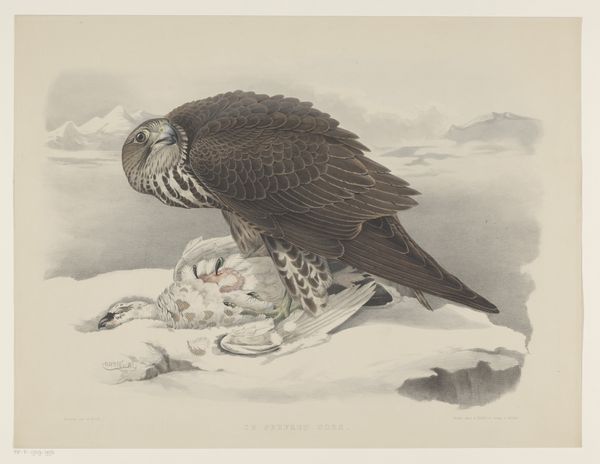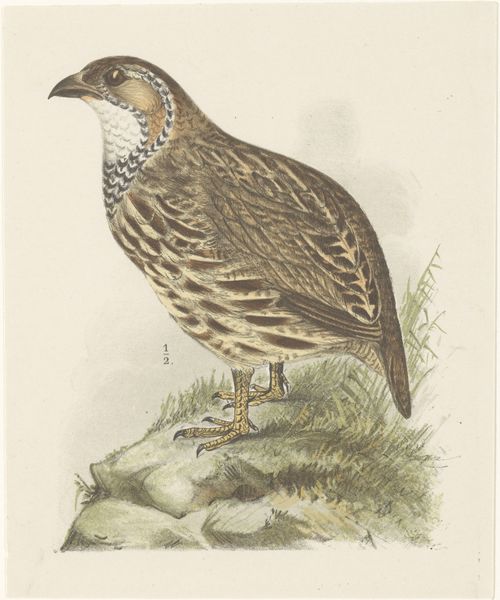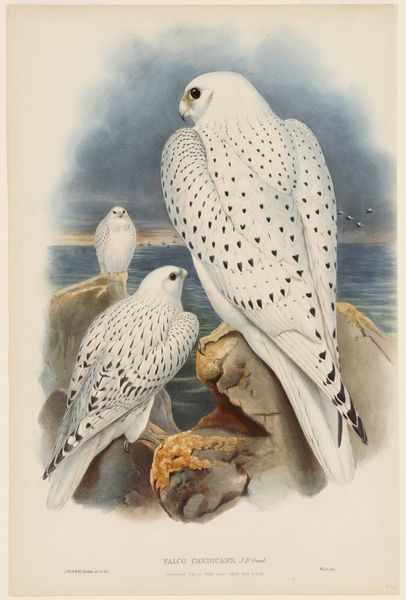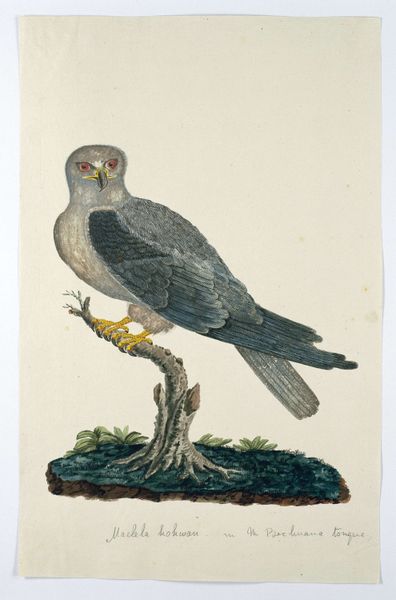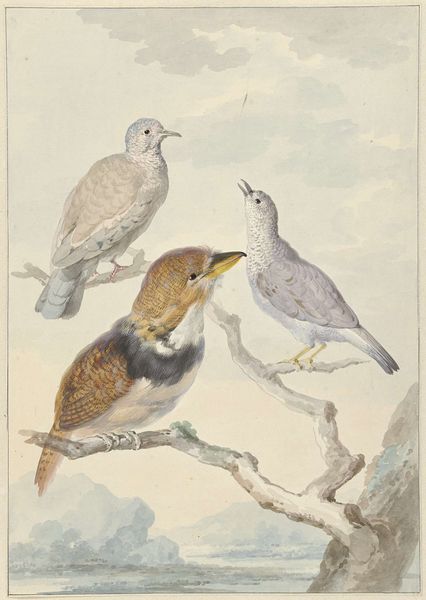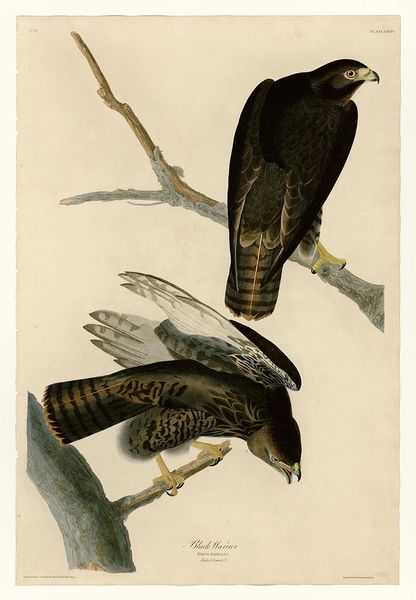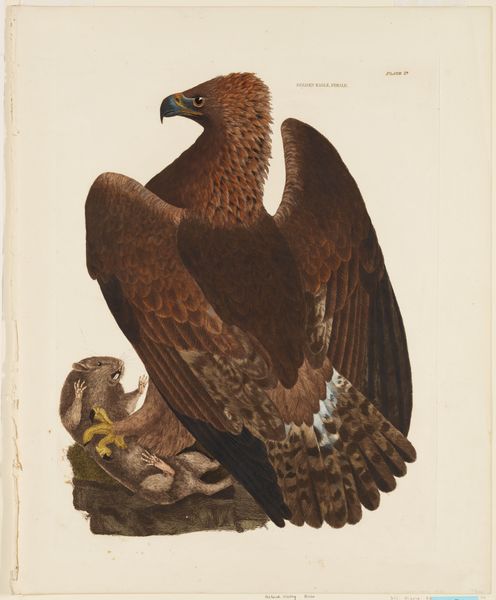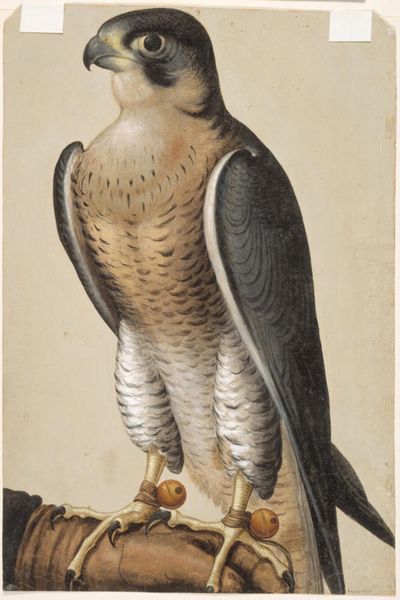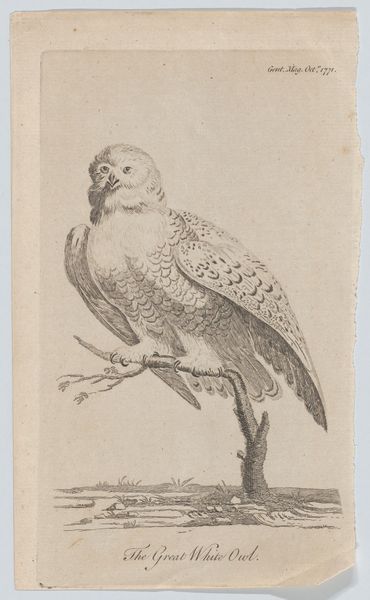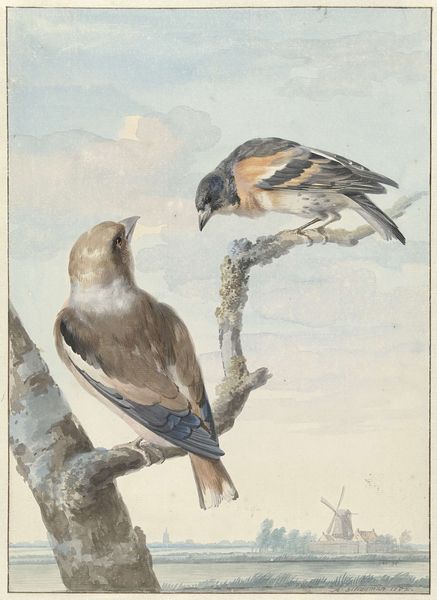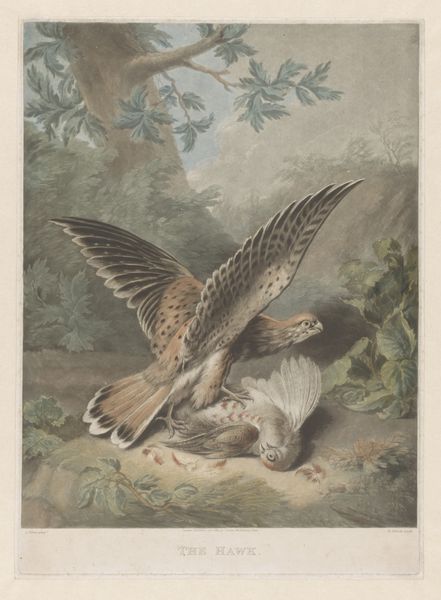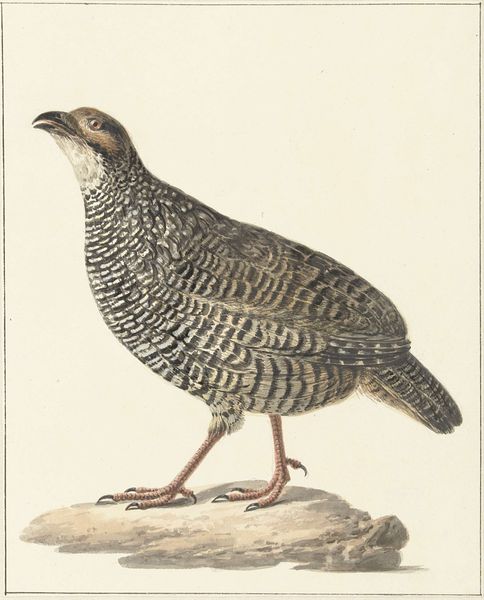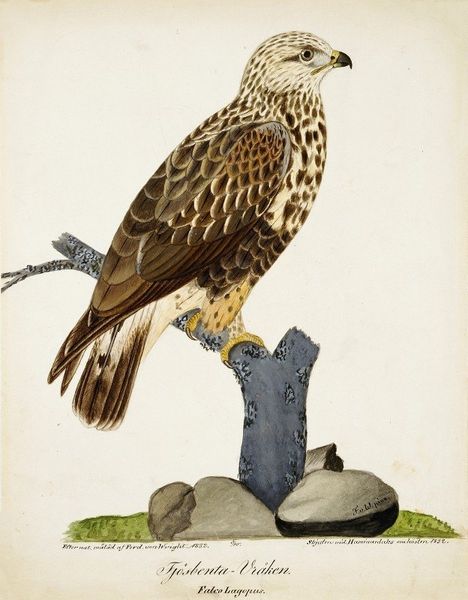
#
shape in negative space
#
toned paper
#
light pencil work
#
green and blue tone
#
pencil sketch
#
muted green
#
watercolour illustration
#
green and neutral
#
remaining negative space
#
watercolor
Dimensions: height 652 mm, width 498 mm
Copyright: Rijks Museum: Open Domain
Editor: Here we have Willem Bastiaan van Wouw’s “Valk,” created sometime between 1843 and 1853. It's currently held in the Rijksmuseum, a watercolor and pencil sketch on toned paper depicting a falcon perched on a rock by the sea. The muted colors give it such a peaceful, almost melancholic quality. How do you interpret the work? Curator: Well, considering the historical context, it is important to examine how Dutch national identity was being formed in the 19th century. Images of powerful birds, like this falcon, were frequently used to symbolize strength, independence, and a connection to the natural landscape. Think about the socio-political climate; how might the Dutch have viewed this symbol of freedom during this period? Editor: That’s interesting! I hadn't considered the political angle. It seemed like just a lovely illustration. Curator: Precisely! What kind of public was van Wouw engaging through this art? How does a museum like the Rijksmuseum display and curate it, thus shaping its public perception? Editor: I suppose putting it in the Rijksmuseum elevates it beyond just a scientific study or something. Were images like this part of building national pride? Curator: Absolutely! Museums played a significant role in constructing and reinforcing national narratives. Think about it – the careful selection and presentation of artworks to shape a shared cultural identity, a national story that everyone could relate to, and most importantly, believe in. How else do you see its context shaping your view of the piece? Editor: So it’s more than just a pretty bird; it’s a symbol deliberately crafted and presented to evoke a particular feeling of national pride! That gives it so much more depth. Curator: Indeed. Considering art’s role in broader social and political narratives allows us a far more in-depth perspective, moving past merely aesthetic appreciation toward understanding its historical importance and continuing impact. Editor: I see the artist as less neutral now. All art has social context, something that may get overlooked, yet the selection into important collections confirms cultural and societal assumptions. Thanks for expanding my horizons!
Comments
No comments
Be the first to comment and join the conversation on the ultimate creative platform.
